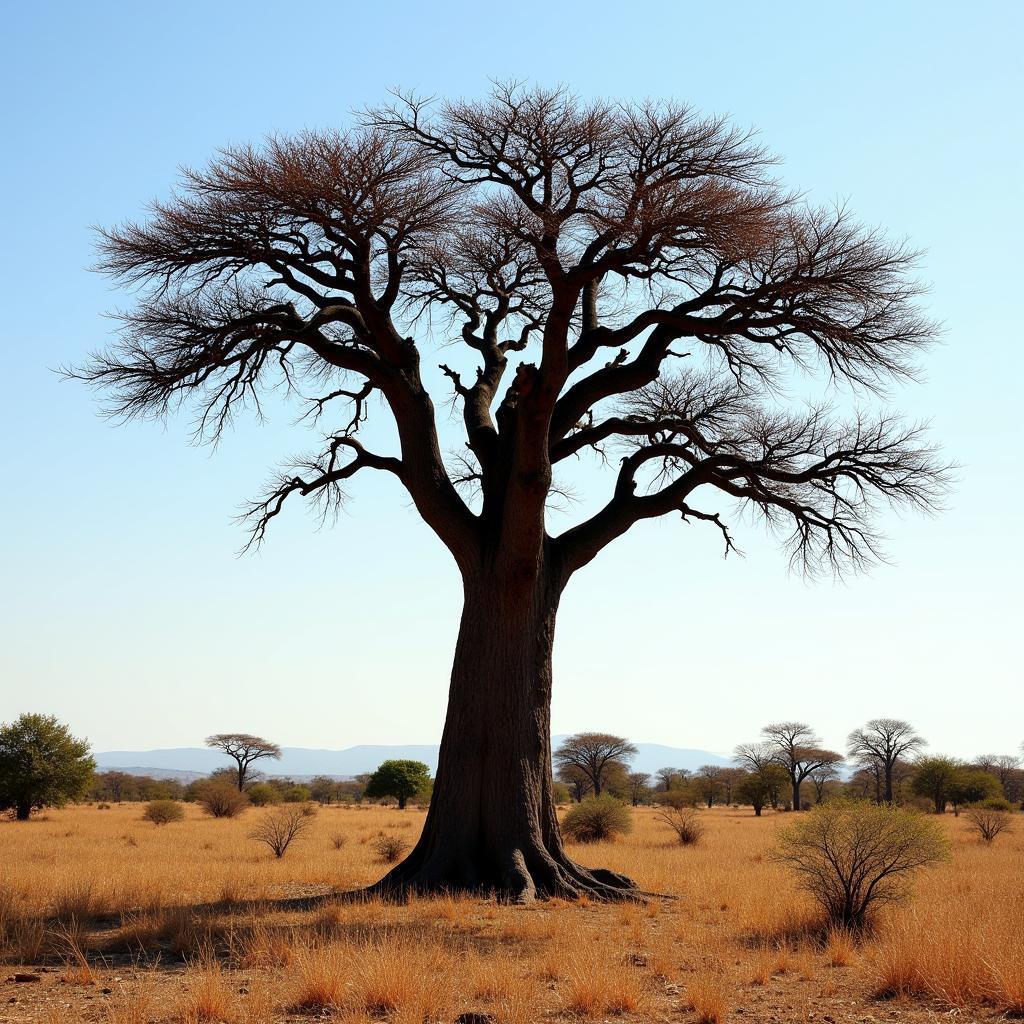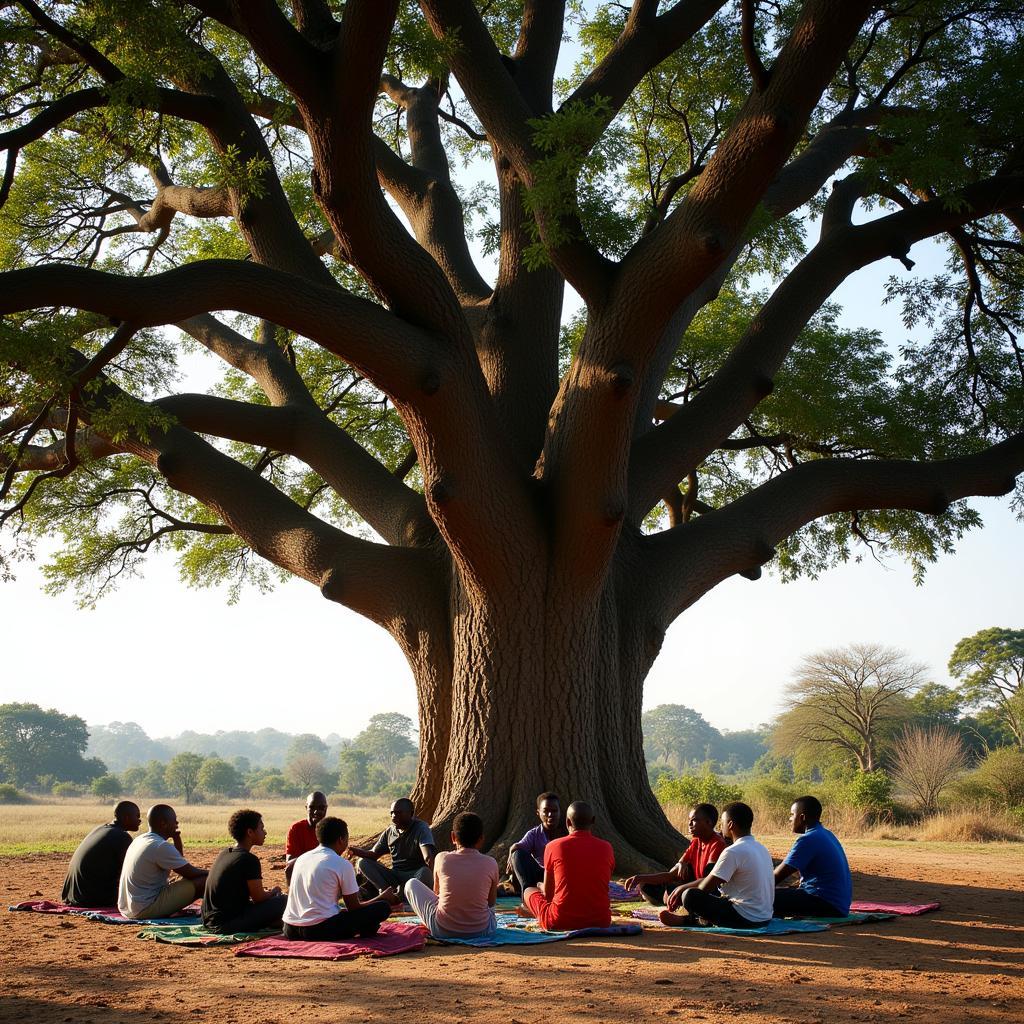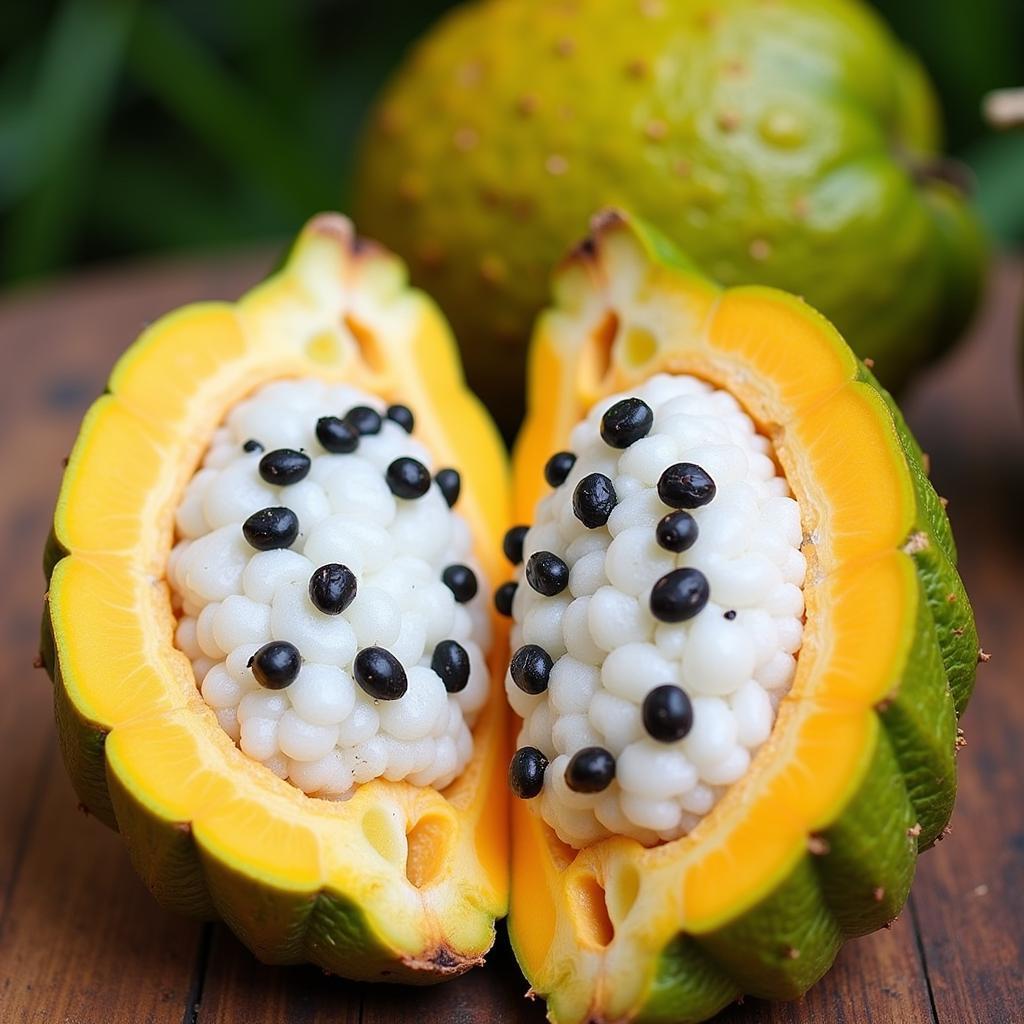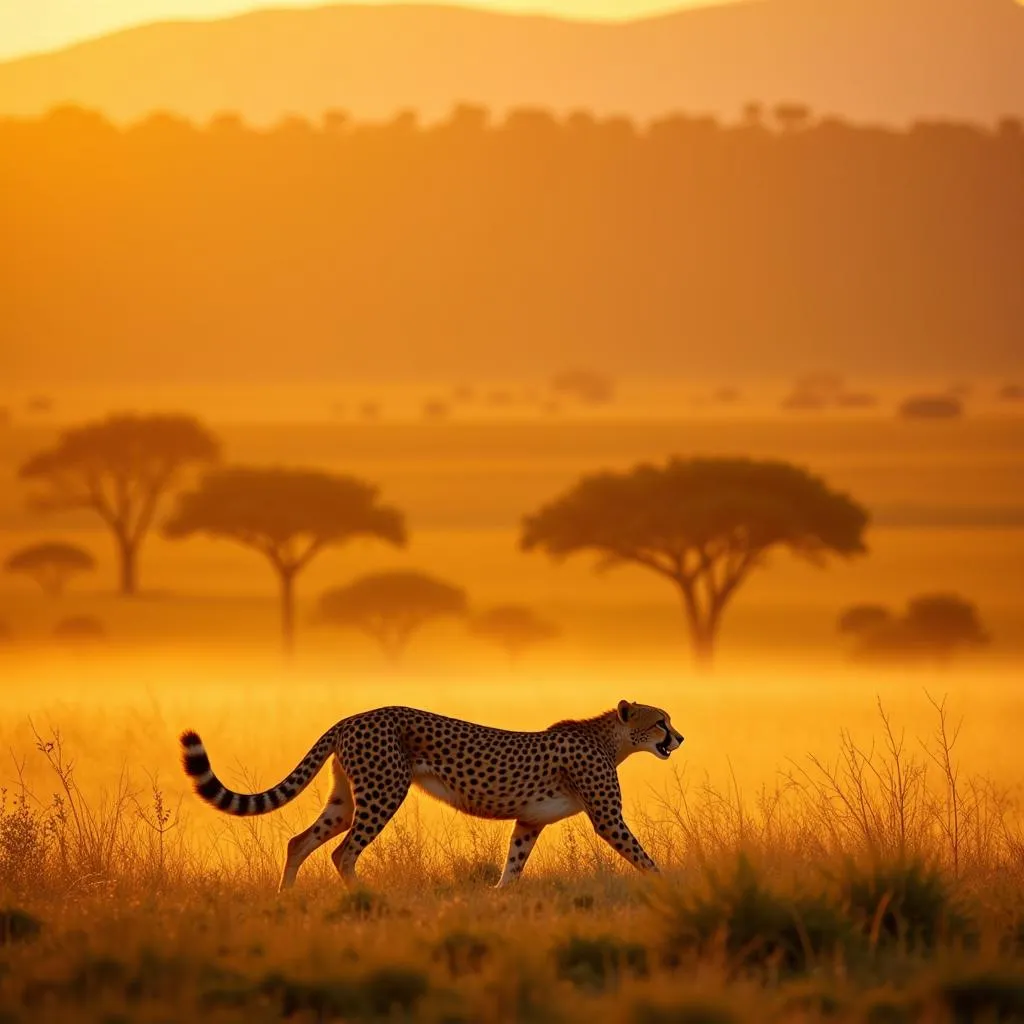The Majestic African Bottle Tree: A Symbol of Resilience and Life
The African Bottle Tree, scientifically known as Adansonia digitata, is an iconic symbol of the African savanna. This majestic tree, with its unusual bottle-like trunk and sprawling branches, has captivated the imaginations of explorers and storytellers for centuries. Its ability to thrive in harsh, arid environments speaks to its remarkable resilience and vital role in the ecosystem.
 An African bottle tree standing tall in the savanna landscape
An African bottle tree standing tall in the savanna landscape
Unraveling the Secrets of the Bottle Tree’s Unique Features
The most striking feature of the African bottle tree is undoubtedly its massive trunk, which can grow up to 30 feet in diameter. This unique shape serves a critical purpose: storing water. During the rainy season, the tree absorbs vast amounts of water, swelling its trunk like a giant bottle to survive the long, dry months that follow. This adaptation allows the tree to thrive in regions with unpredictable rainfall.
Adding to its distinctive appearance, the African bottle tree sheds its leaves during the dry season, leaving behind a network of twisted, almost otherworldly branches. This characteristic has earned it the nickname “upside-down tree,” as the branches resemble roots reaching towards the sky.
The Cultural Significance of a Botanical Giant
For centuries, the African bottle tree has held deep cultural and spiritual significance for communities across the continent. Its imposing size and longevity, often exceeding 1,000 years, have made it a symbol of wisdom, strength, and resilience in many cultures.
 An African village gathering place shaded by a massive bottle tree
An African village gathering place shaded by a massive bottle tree
Traditional beliefs often associate the bottle tree with ancestral spirits and the afterlife. Some communities believe that the spirits of their ancestors reside within these ancient trees, offering guidance and protection to the living. As a result, bottle trees are often considered sacred, and harming them is strictly taboo.
More Than Just a Tree: The Many Uses of Adansonia Digitata
The African bottle tree’s remarkable properties extend far beyond its impressive appearance and cultural significance. Local communities have long recognized its practical uses, relying on it for a wide range of purposes.
Sustenance and Survival in Arid Landscapes
The African bottle tree is a true gift of nature, providing sustenance and essential resources to people and animals alike. Its fruit, known as “monkey bread” or “baobab fruit,” is highly nutritious, packed with Vitamin C, antioxidants, and essential minerals.
 An open African bottle tree fruit, revealing its white, powdery pulp
An open African bottle tree fruit, revealing its white, powdery pulp
The seeds, leaves, and bark also have various culinary and medicinal uses. The leaves, rich in iron and calcium, are often used in soups and stews, while the seeds can be ground into a powder to make a nutritious porridge. The bark, known for its anti-inflammatory and analgesic properties, is used to treat a variety of ailments, including fever, diarrhea, and even malaria.
A Versatile Resource for Everyday Life
Beyond its nutritional and medicinal value, the African bottle tree also provides essential materials for daily life. The strong, fibrous bark is used to make rope, mats, baskets, and even clothing. The hollowed-out trunks of older trees, often naturally formed by decay, can serve as shelters, storage spaces, and even burial sites.
The Future of the African Bottle Tree: Conservation and Appreciation
Despite its resilience, the African bottle tree faces increasing threats from climate change, deforestation, and unsustainable land-use practices. Recognizing its ecological and cultural importance, conservation efforts are underway to protect and preserve this iconic species for generations to come.
Learning about the African bottle tree allows us to appreciate the interconnectedness of nature, culture, and human survival. It serves as a reminder of the vital role trees play in our world and the importance of respecting and protecting the natural wonders that sustain us.
Frequently Asked Questions about the African Bottle Tree
1. How long do African bottle trees live?
African bottle trees are incredibly long-lived, with some individuals estimated to be over 2,000 years old.
2. Why is it called the “upside-down tree”?
Its branches resemble roots reaching towards the sky, particularly during the dry season when the tree sheds its leaves.
3. What does the fruit of the African bottle tree taste like?
The fruit, known as “monkey bread,” has a slightly tangy, citrusy flavor often compared to a combination of grapefruit, pear, and vanilla.
4. Are African bottle trees endangered?
While not currently listed as endangered, the African bottle tree faces growing threats from habitat loss and climate change, making conservation efforts crucial.
5. What is the cultural significance of the African bottle tree?
For many African communities, the tree symbolizes wisdom, strength, and longevity. It’s often considered sacred, believed to house ancestral spirits, and plays a significant role in traditional ceremonies and rituals.
6. Can you eat all parts of the African bottle tree?
Yes, various parts of the tree are edible and used for different purposes. The fruit pulp, seeds, leaves, and even the roots have nutritional and medicinal value.
7. Where can I see an African bottle tree?
African bottle trees are native to the African savanna, particularly in countries like Botswana, Namibia, South Africa, Zimbabwe, and Madagascar.
Explore More About Africa’s Natural Wonders:
- Discover the fascinating world of African jungle animals and plants.
- Learn about the benefits of African essentials argan oil used for centuries in beauty and wellness practices.
- Be amazed by the towering heights of African huge trees and their ecological importance.
Need Help Planning Your African Adventure?
Contact us for personalized assistance with your travel plans:
- Phone: +255768904061
- Email: kaka.mag@gmail.com
- Visit us: Mbarali DC Mawindi, Kangaga, Tanzania.
Our dedicated team is available 24/7 to help you create unforgettable experiences in the heart of Africa.

